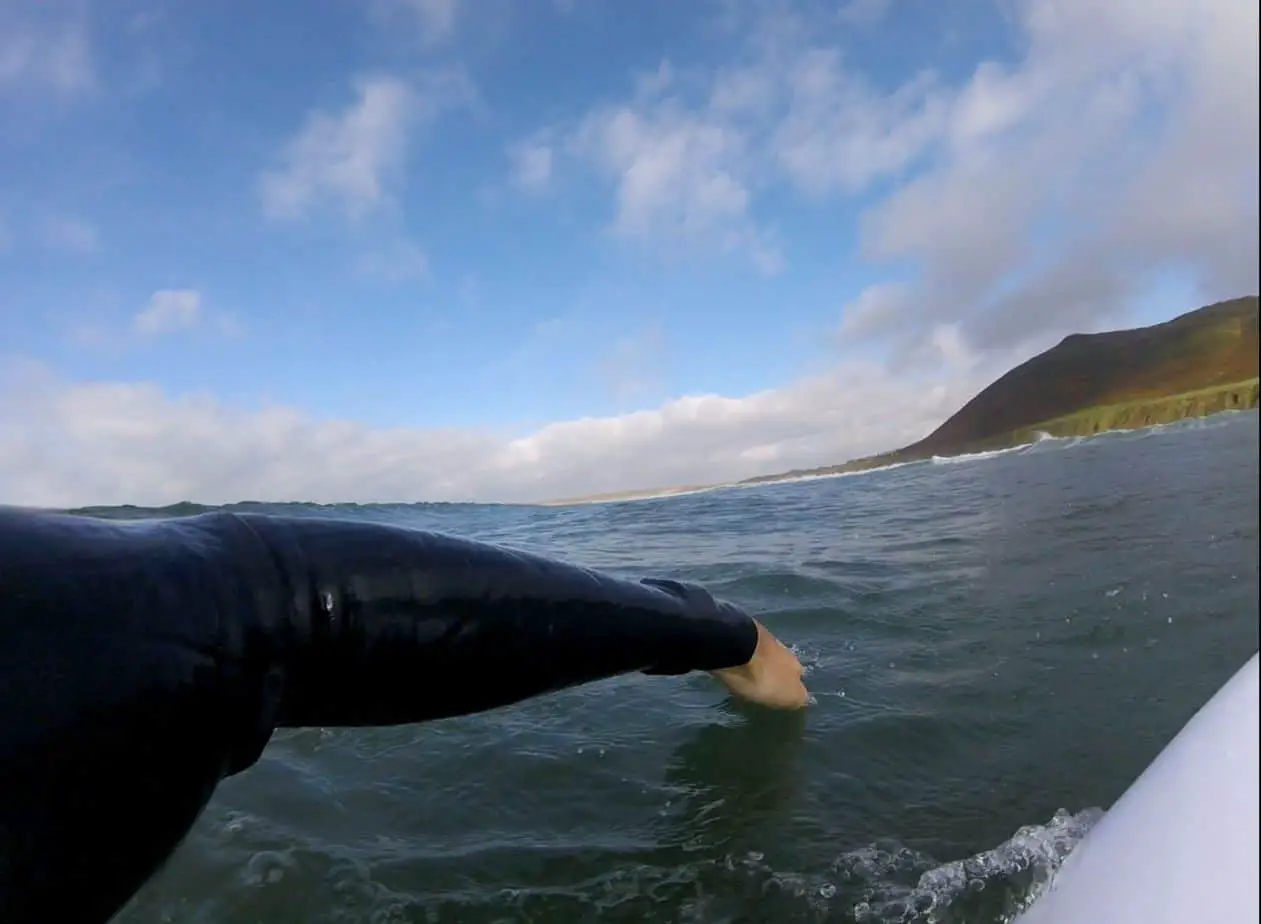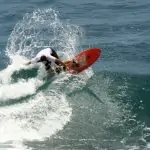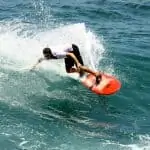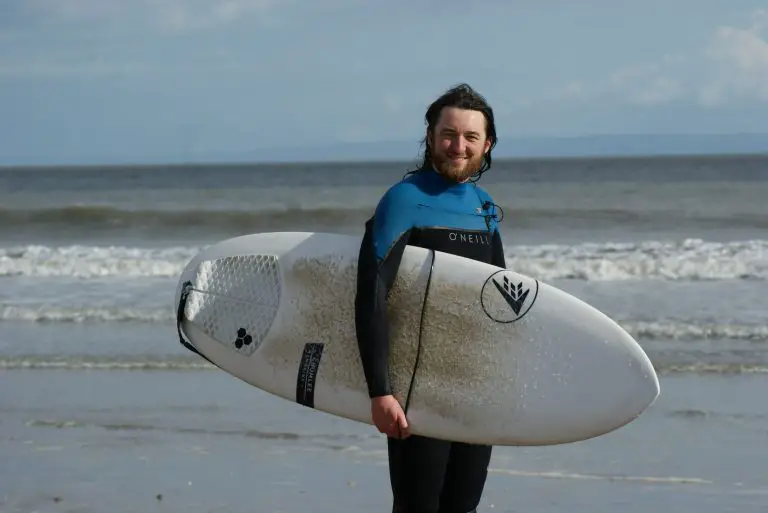8 Tips to Improve Your Surf Paddling Technique
Catching more waves when you go surfing means you will have more fun and progress more quickly, which is of course a huge bonus!
However, being able to catch those extra waves is not as easy as it sounds.
You’ll likely have lots of others out in the surf competing for each wave and so many other factors to consider just from being in the ocean.
With this in mind, I’ve prepared this guide to help you get more waves out of each session by increasing your paddling power in the surf with these 6 tips, and it’s not all about brute force, as you’ll soon see below!
Stay Centered
I’ve deliberately included this first as it’s not the first thing that comes to mind when you think ‘surf paddling technique’ but it’s definitely an essential.
I say this because a common problem that learner surfers have is that, when trying to paddle faster or harder, they can often overdo it.
This extra effort causes them to rock from side to side, or ‘yaw’ when paddling. As you can imagine, tilting your board to each side takes away from the smooth planing on the surface, effectively causing more drag.
Instead, you want to focus on staying centered when paddling. You can do this by not overextending your arms when reaching forward to paddle.
This will keep you from
You should also try to stay calm and paddle in a more relaxed way as this will help you to stay ‘in trim’ without any loss of speed.
I also found this YouTube video really helpful here, as it explains paddling technique by comparing surfing’s greatest professional of all time, Kelly Slater, against another excellent pro surfer, Bede Durbidge. The contrasts are interesting and really help to show how good paddling technique matters and helps with power:
Reach Ahead, Not Out to the Side
To go along with the points above, when reaching forward to take your next stroke, you’ll want to deliberately aim to put your hand in the water in front of you.
This is because many learner surfers struggle to paddle in the early days and, as a result, just dip their fingers in way out to the side.
The problem here is that, the further from your board you try to paddle, the less power you can generate.
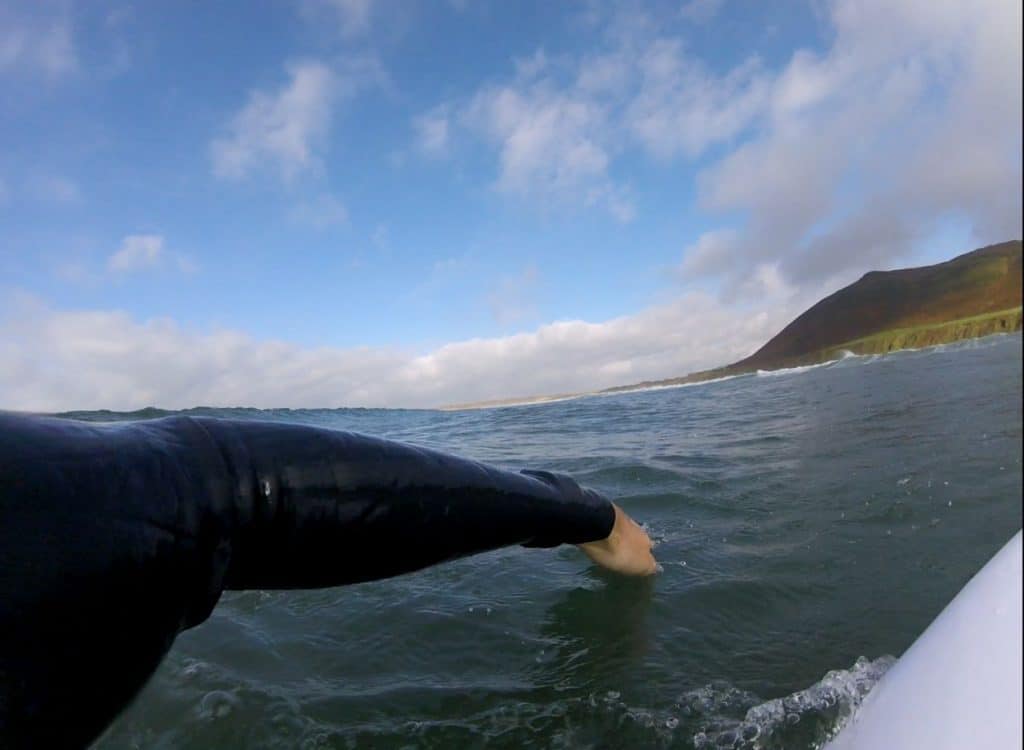
If you think of swimming, we put our arms dead ahead and pull down, in line with our body, not way out to one side.
The greater the angle between your head the entry point of your hand into the water for each stroke, the weaker it will be.
In contrast, starting your paddling stroke as close to centered as possible will give you more of a boost and help you to paddle for your next wave.
Use Your Entire Arm
Now this is one I have not heard any surfers talking about, probably because it comes from swimming.
In fact, I got this from a friend who is a swimming instructor to help me with my front crawl technique in the pool, and I can tell you it works a charm with paddling in the surf, too!
Before doing this, I used to try to move as much water as I could with my hands, only dipping my arms in the water a little and moving accordingly.
However, after trying this technique, I now generate much more speed when paddling out in the surf and catching waves.
The thing to do here is to think about using all of your forearm as a way to move water, which is what swimming and surf paddling are all about.
Moving the water allows you to make progress through the water, so the more water you move with each stroke, the faster you will glide along the surface.
I also found this helpful in that it is much easier to move my arm through the water compared to only a hand.
The result is that I use less energy for each stroke, making it more efficient and saving more energy for taking off and riding waves, which is what we’re all trying to do!
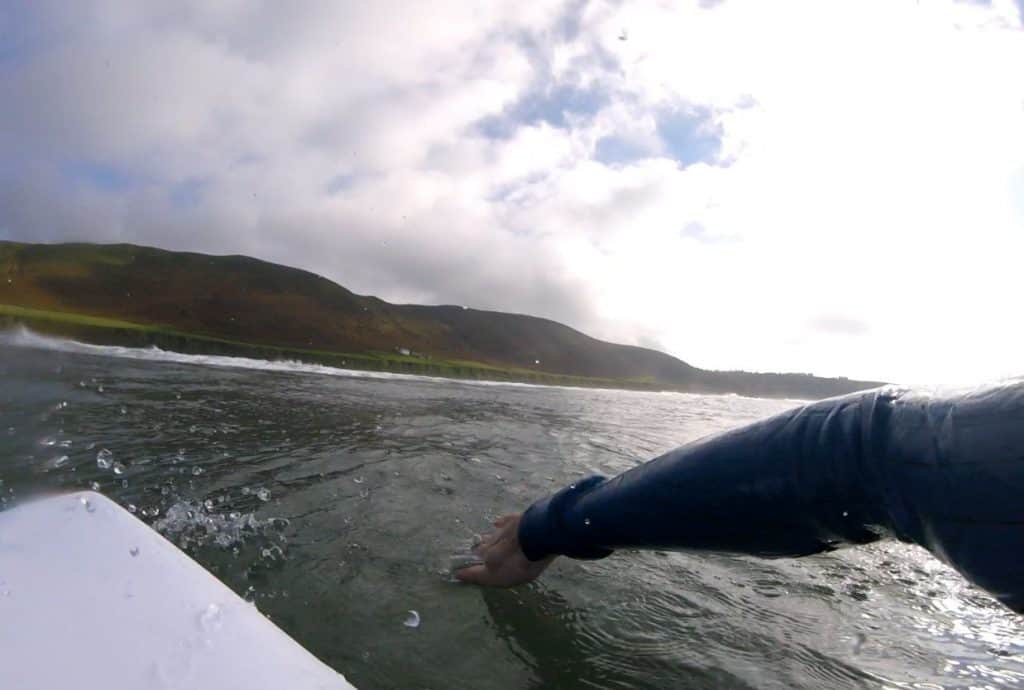
Keep Your Head Upright
This is another thing that new surfers really struggle with and often stand out a mile for.
Beginners in the surf usually have their heads down and close to the board, meaning that they can’t see far and struggle to paddle.
However, by simply making the effort to arch your back and hold your head up as high as you can, you gain visibility and maximize your paddling power.
This ‘head held high’ approach helps with your paddling technique because it allows you to work on the points above, namely:
- Staying centered on your board
- Reaching ahead of you, not to the side
- Using your entire arm for each stroke
Benefits of a Raised Head While Paddling
If you raise your head when paddling, you will also be bringing your torso up with it. This is crucial for the points mentioned previously in this post in that:
- This gives you more range when reaching forward to paddle, meaning your motion is more efficient and easier.
- Your hands can enter the water closer to the central line of your surfboard, generating more power
- You can execute the forearm technique described above, meaning faster movement through the water.
The only catch here is that it’s hard to keep your head up while paddling on your surfboard since it requires a very specific group of muscles, which most of us don’t use in this way normally.
So, to help you gain that strength, I suggest trying out the ‘superman hold’ exercise when on dry land.
This simple exercise will help you with the strength in your back and also get you used to
You can see how to do this in the video below.
A word of warning: when watching, it may look easy and almost too simple in fact, but it’s deceptively difficult for most, so keep that in mind and try to build up over time!
Breathe Consistently
This is another of the things that I struggled with for years when I was learning to surf.
I’d be so lost in what was going on around me that I’d forget to breathe properly!
I found myself gasping or taking sharp breaths and, without realizing it, holding them for a while each time.
After doing some yoga, I began to realize just how much a proper breathing technique could help me in the surf.
Nowadays, I stay aware of my breath and consciously try to breathe in through my nose and out of my mouth.
This helps in that the simple act of thinking about the breath makes sure that you are doing it properly.
I also focus on keeping a steady breath, deliberately keeping my breaths to a slower rate compared to the usual rapid breathing that happens when we do intense physical activity.
Doing the above also helps you to stay calm when a big wave is coming your way, which is when I would usually tense up and is the worst time to be short of breath!
Of late, I’ve been seeing more and more about nose breathing, led by Patrick McKeown and his book The Oxygen Advantage (Amazon affiliate link), which I have not yet read but is definitely on the list!
As such, you may want to start trying to breathe entirely through the nose, but I’d recommend trying this on land first then out in the surf if it works for you.
You can see more on this in the video by Patrick McKeown below:
Note that this idea of nose breathing is still quite new to me, hence the hint of caution above, but it is something that big-wave and all-round surf legend Laird Hamilton champions and swears by it, again shown in a video that you can see below:
Look Dead Ahead
As you can probably see a theme here, and so it continues with this next tip!
When it comes to paddling for a wave you want to catch, you need to look dead ahead.
Doing so will make sure you are traveling forward without any wasted energy and, again, help you
By resisting the temptation to look back and forth to see what the wave is doing every second, you will reduce the resistance to forward motion on your board.
Just like when you are up and riding on a surfboard, you need to look where you want to go, otherwise your balance will be off and you will head in a different direction.
Where you look is where you will go, so if you are looking to the side while paddling forwards, you will create more resistance and have slower movement forward for the same effort.
Instead, pick your wave with confidence, knowing that you are in a good position and look dead ahead to maximize your paddling speed.
You will get more waves as a result and spend less energy in doing so. Win win.
Rows and Raises When Weight Training
Weights and hitting the gym will help you to get more power from each stroke when paddling in the surf, but there are a few key move
Renegade rows are are one of my favorite exercises as they really help to work a variety of muscles that will all benefit your paddling, as can be seen in the video below.
Side lateral raises or L raises are also great exercises to work on your paddling power.
To get an overview of how to do side laterals perfectly, check out Jeff Cavaliere’s in-depth breakdown below:
You can also see quick guide to doing L raises below:
Hit the Pool
The swimming pool is an overlooked place to train for surfing, but it’s an incredible place to help you train and work on your paddling power and technique.
When you go swimming, you are doing pretty much the closest exercise to surfing that you can do, so it’s always going to be helpful.
When swimming in a pool, think about your front crawl technique and try to practise all the points we’ve covered above.
This gives you a safe testing ground to focus on technique that is pretty close to surfing.
Remember that, although you won’t be lying on a board in the pool, your stroke and paddling technique can be greatly improved here, making for more fun and more waves out in the surf!
Further Useful Resources
You should also check out the following useful videos for getting better at paddling:
The guys from How to Rip also do a great job of explaining exercises that help you to get more power when paddling for waves in this video:
